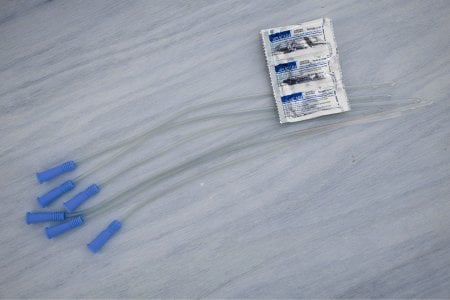Catheterization for Spinal Cord Injuries

For many people with spinal cord injuries (SCI), catheterization is a crucial part of daily life. A spinal cord injury can affect bladder control, making it difficult or impossible to urinate naturally. This is where catheters come in—helping individuals manage their bladder health, prevent complications, and maintain independence.
Understanding your catheter options and learning the best techniques for self-catheterization can make a significant difference in comfort and confidence. In this guide, we’ll cover everything you need to know about catheterization for spinal cord injuries, from choosing the right catheter to tips for a smooth and safe routine.
Understanding Spinal Cord Injuries and Catheterization
The spinal cord plays a vital role in controlling motor function, sensory impulses, and autonomic functions, including bladder and bowel control. When a spinal cord injury (SCI) occurs, these functions can be disrupted, leading to challenges with bladder management.
How Does an SCI Affect the Bladder?
A spinal cord injury can impact bladder control because the nerves responsible for bladder function originate near the lower spinal cord. When these nerves are damaged, signals between the bladder and brain may be disrupted, causing issues such as:
- Loss of voluntary bladder control
- Urinary retention (inability to empty the bladder)
- Incontinence (involuntary leakage)
- Increased risk of urinary tract infections (UTIs)
This condition is known as neurogenic bladder, a common issue for individuals with SCI. Without proper bladder management, complications such as infections, kidney damage, or bladder stones can arise.
Common Causes of Spinal Cord Injuries
Spinal cord injuries can occur due to various accidents or health conditions. According to the National Spinal Cord Injury Statistical Center, the most common causes include:
- Motor vehicle accidents
- Falls
- Acts of violence
- Sports injuries and workplace accidents
Types of Spinal Cord Injuries & Their Effects
The location and severity of an SCI determine its impact on body function. Injuries higher on the spinal cord cause greater loss of function.
Levels of Spinal Cord Injury:
- Cervical (C1–C8) – Affects the neck, shoulders, arms, hands, and diaphragm.
- Thoracic (T1–T12) – Impacts the chest, certain back muscles, and some abdominal functions.
- Lumbar (L1–L5) – Affects the lower back, legs, and some genital function.
- Sacral (S1–S5) – Controls parts of the legs, feet, genital organs, and bowel/bladder function.
Tetraplegia vs. Paraplegia
Tetraplegia (quadriplegia) – Results from injuries between C1–T1, affecting movement in all four limbs.
Paraplegia – Caused by injuries between T2–S5, impacting the lower body, including the hips, legs, and feet.
Some individuals experience complete injuries (no function below the injury site), while others have incomplete injuries (some sensation or movement remains). Early treatment and rehabilitation can help maximize recovery and function.
Spinal Cord Injuries & the Need for Catheterization
More than 80% of individuals with SCI experience bladder dysfunction. Because the nerves controlling bladder function may no longer work properly, catheterization becomes a critical method for bladder management.
Common conditions affecting bladder control after an SCI include:
- Overactive bladder – The bladder contracts involuntarily, causing frequent urination or leakage.
- Underactive bladder – The bladder does not contract properly, leading to urinary retention.
- Bladder sphincter dyssynergia – A condition where bladder and sphincter muscles do not coordinate properly, increasing the risk of infections and kidney issues.
Clean Intermittent Catheterization for Spinal Cord Injuries
Intermittent catheterization (IC) is one of the most common and effective ways for SCI patients to manage their bladder health. Unlike indwelling (Foley) catheters, IC involves inserting a catheter multiple times a day to drain the bladder, reducing the risk of infections and complications.
Benefits of Intermittent Catheterization:
- Helps prevent urinary tract infections (UTIs)
- Reduces risk of kidney damage
- Allows more independence and control over bladder function
- Less discomfort compared to indwelling catheters
Choosing the right catheter depends on factors like comfort, ease of use, and personal preference. Working with a healthcare provider ensures you get the best fit for your needs.
Managing bladder function after a spinal cord injury is essential for long-term health and quality of life. Intermittent catheterization is a safe, effective solution that helps prevent complications while allowing greater independence.
If you or a loved one has an SCI and needs assistance finding the right catheter, our specialists are here to help. Request free catheter samples today and explore the best options for your needs!
Related Articles





